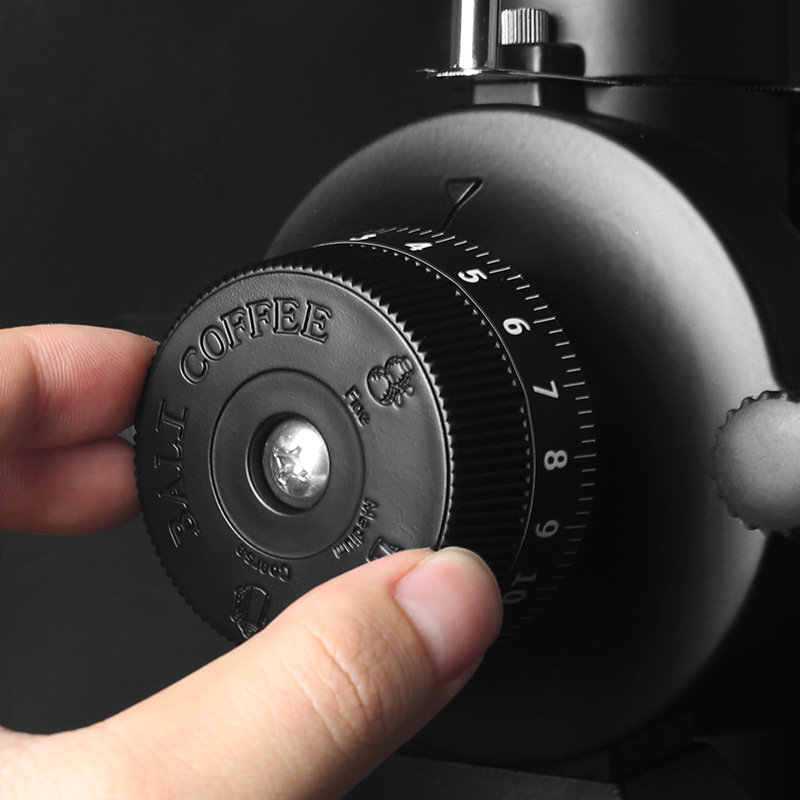The grinding parameters of different coffee bean varieties need to be comprehensively adjusted in combination with the degree of roasting, extraction method and flavor characteristics. The following are detailed parameter suggestions based on the two mainstream varieties, Arabica and Robusta:
First, Arabica coffee beans
Dark-baked Arabica
Grinding degree: Medium to fine grinding (similar to coarse granulated sugar, sieve pass rate 60%-70%)
Applicable equipment: Italian concentrator, Mocha pot, French press pot
Parameter case:
Espresso: 18g coffee grounds, 36g coffee liquid extracted in 25 seconds, pressure 9bar, water temperature 93℃
French press: Coarse grinding (similar to sea salt), powder-water ratio 1:15, water temperature 88℃, soak for 4 minutes
Flavor profile: Dark chocolate, caramel, nutty aroma, high body, well-balanced bitterness and sweetness
2. Medium-dark baked Arabica
Grinding degree: Fine grinding (close to salt particles, sieve pass rate 70%-75%)
Applicable equipment: Hand-rinsing kettle, philharmonic press, siphon kettle
Parameter case:
Hand-brewed: 15g coffee grounds, water temperature 93℃, total brewing time 2 minutes and 30 seconds, powder to water ratio 1:16
Siphon pot: Medium grinding (similar to sand grains), water temperature 90℃, extraction time 1 minute
Flavor profile: Citrus acidity, honey sweetness, caramel aftertaste, moderate acidity
3. Light-baked Arabica
Grinding degree: Fine grinding (slightly coarser than Italian concentration, sieve pass rate 75%-80%)
Applicable equipment: Cold extractor, ice dropper, V60 filter cup
Parameter case:
Cold extraction: Medium-coarse grinding (similar to coarse granulated sugar), powder to water ratio 1:8, refrigerated and soaked for 12 hours
V60 hand rinse: Water temperature 88℃, water is injected in sections, with a total injection volume of 240ml
Flavor expression: Berry acidity, floral aroma, tea-like sensation, and bright acidity
Second, Robusta coffee beans
Dark-baked Robusta
Grinding degree: Coarse grinding (similar to coarse salt, sieve pass rate 50%-60%)
Applicable equipment: French press pot, Mocha pot, Vietnamese drip filter pot
Parameter case:
French press: Powder to water ratio 1:12, water temperature 95℃, soak for 3 minutes
Mocha pot: Extra fine grinding (similar to flour), extraction time 40 seconds
Flavor profile: Chocolate, smoky, earthy, with a strong bitter taste
2. Medium-baked Robusta
Grinding degree: Medium to fine grinding (similar to refined salt, sieve pass rate 65%-70%)
Applicable equipment: Italian concentrator, cold brew pot
Parameter case:
Espresso: 16g coffee grounds, 32g coffee liquid extracted in 28 seconds, pressure 8.5bar, water temperature 90℃
Cold extraction: Medium-coarse grinding, powder-to-water ratio 1:10, refrigerated and soaked for 8 hours
Flavor profile: Nutty aroma, cocoa flavor, low acidity, and high body
Third, the key adjustment logic
The relationship between roasting degree and grinding degree
Deep-roasted beans: They have a loose structure and are prone to absorbing water and releasing substances. The grinding degree should be slightly coarser (for example, Golden Mandhelin is 10%-15% coarser than light-roasted beans).
Light-roasted beans: They have a dense structure and require finer grinding to enhance extraction efficiency.
The matching of extraction methods and grinding degree
High-pressure extraction (Italian concentration) : Extremely fine grinding is required (similar to flour) to ensure the full release of oil.
Soaking extraction (French press pot) : Coarse grinding is required to avoid excessive extraction that may cause bitterness.
Drip filtration extraction (hand rinse) : Medium to fine grinding is required to balance the extraction efficiency and flavor layers.
Optimization of flavor objectives and grinding degree
Prominent acidity: The grinding degree is slightly coarser (such as shallow-baked beans V60 hand-brewed), and the water temperature is reduced to 88℃.
To enhance the richness: The grinding degree is slightly finer (such as in the deep roasting method press), and the water temperature is raised to 92℃.
Fourth, Common Problems and Solutions
Uneven grinding degree leads to an imbalance in extraction
Phenomenon: Excessive extraction of fine powder (bitter and astringent), insufficient extraction of coarse powder (sour and astringent).
Solution: Use a conical knife bean grinder (to improve uniformity), or remove extremely fine powder through a sieve.
The influence of coffee bean freshness on grinding degree
Fresh beans (within 7 days) : The grinding degree needs to be adjusted to be coarser (for example, hand-brewed beans should be 10% coarser) to avoid excessive exhaust and uneven extraction.
Aged beans (over 30 days old) : The grinding degree needs to be adjusted to 5% finer than that of pressed beans to compensate for the loss of flavor.
The adaptation of equipment characteristics to grinding degree
Flat knife coffee grinder: Suitable for Italian concentration (enhancing oil extraction).
Conical knife bean grinder: Suitable for hand brewing and method pressing (reducing the production of fine powder).


